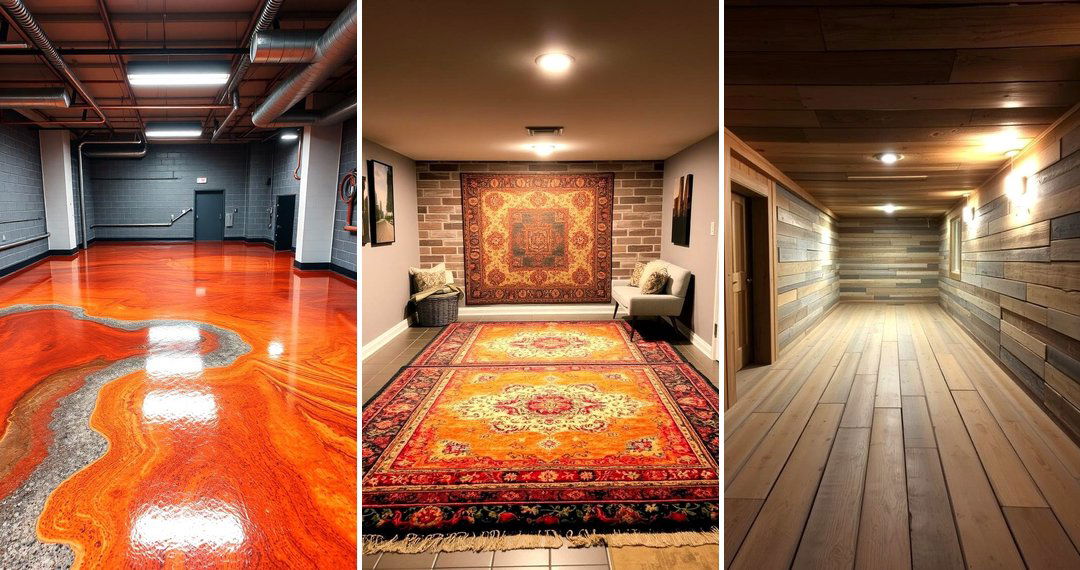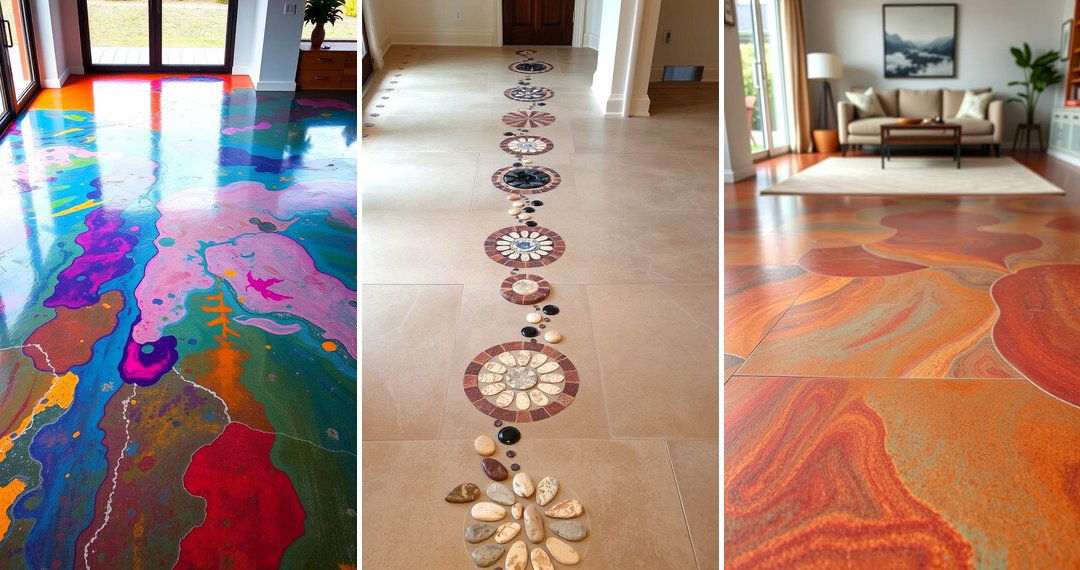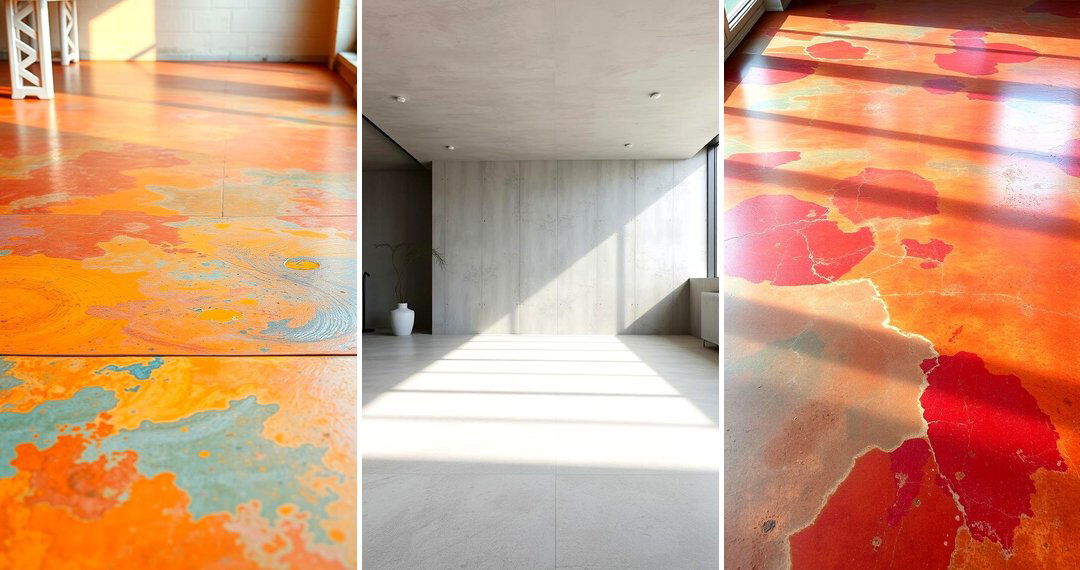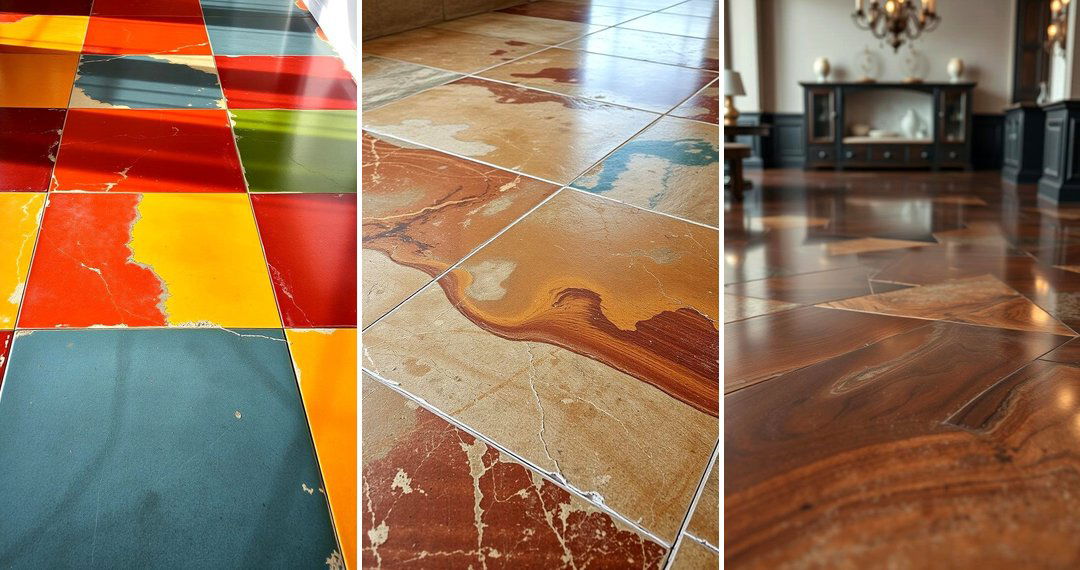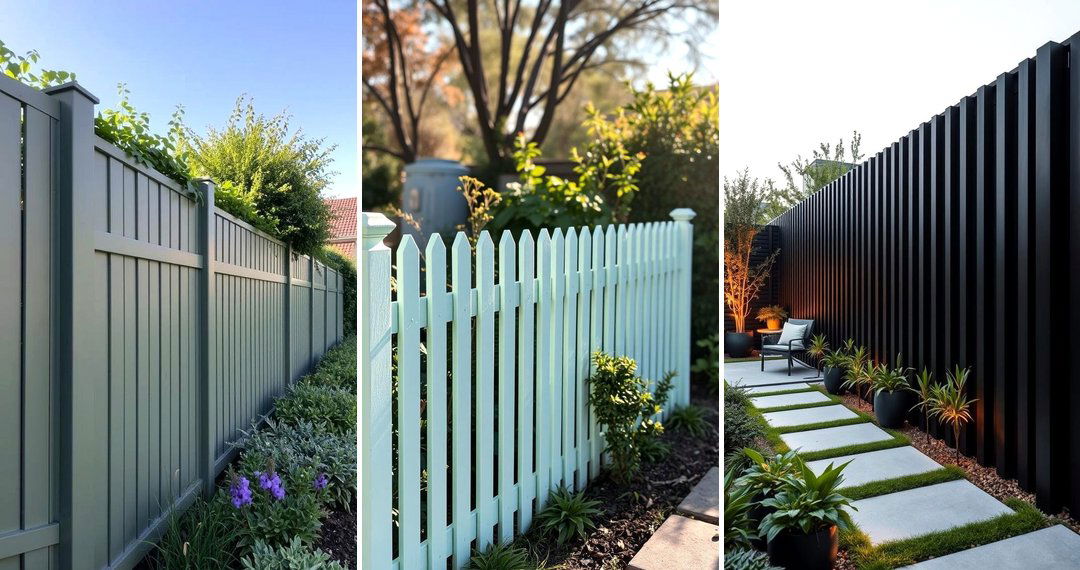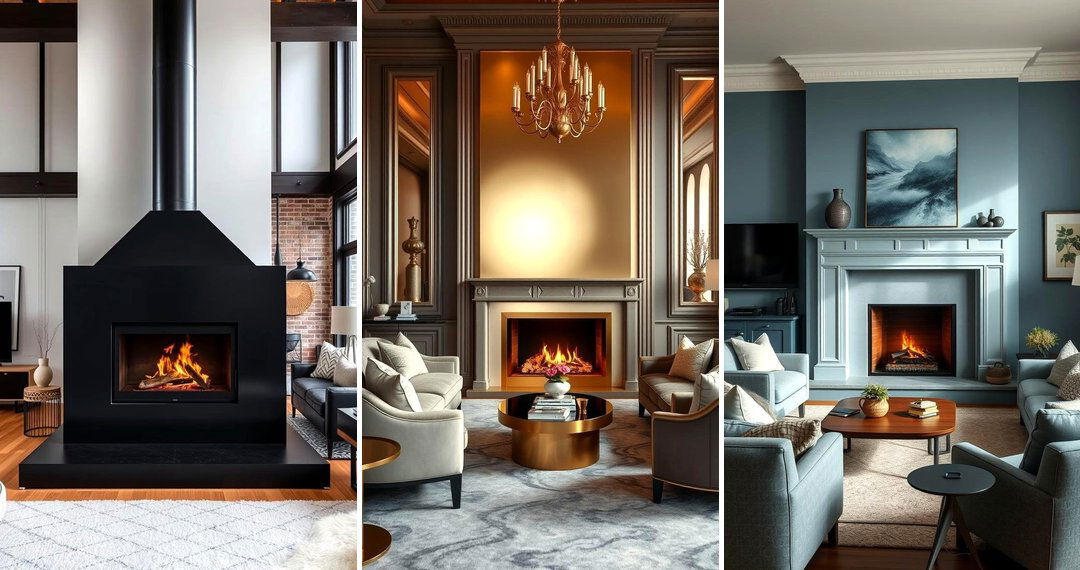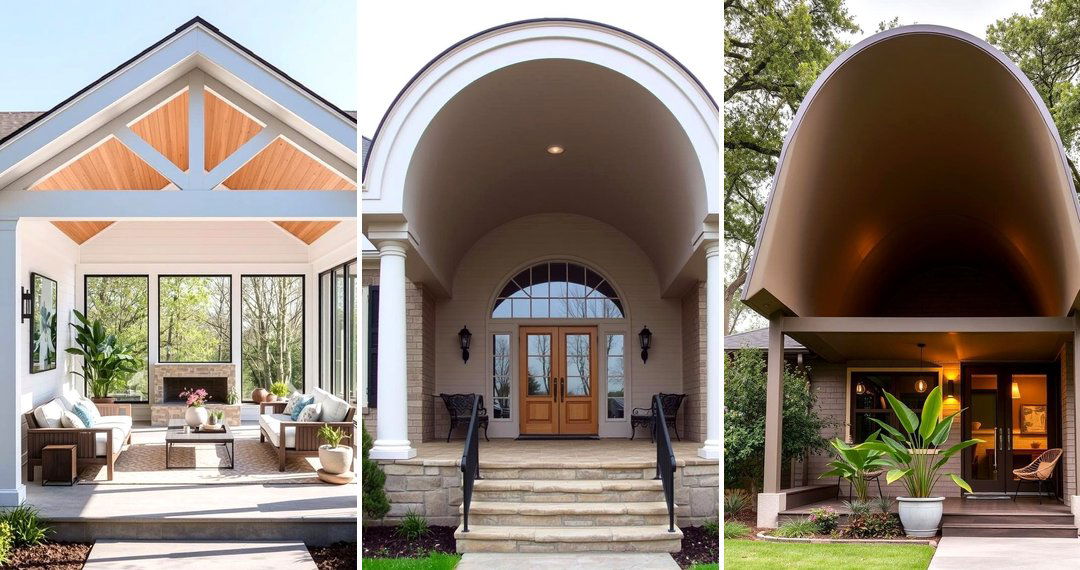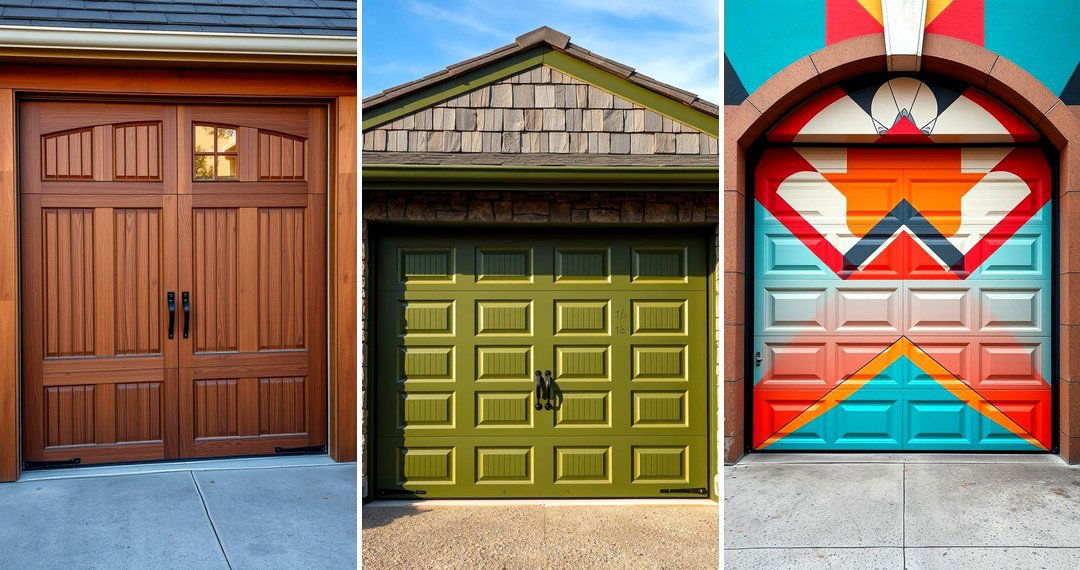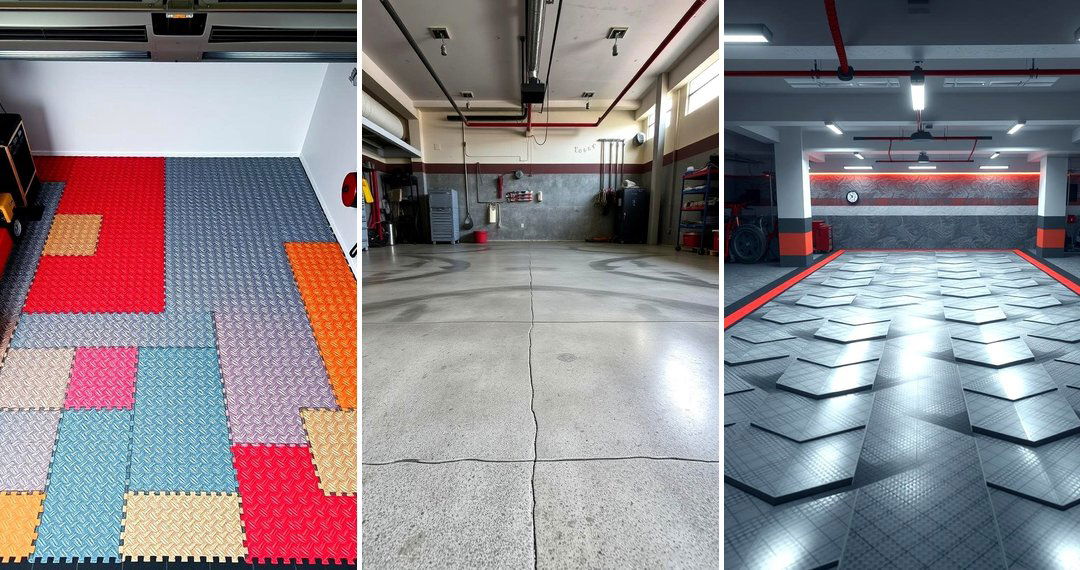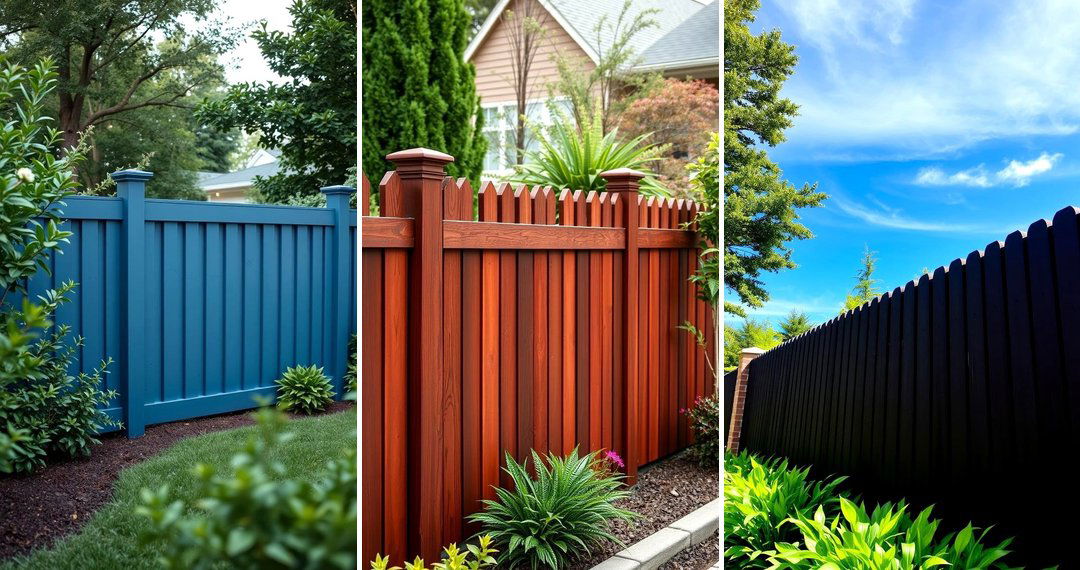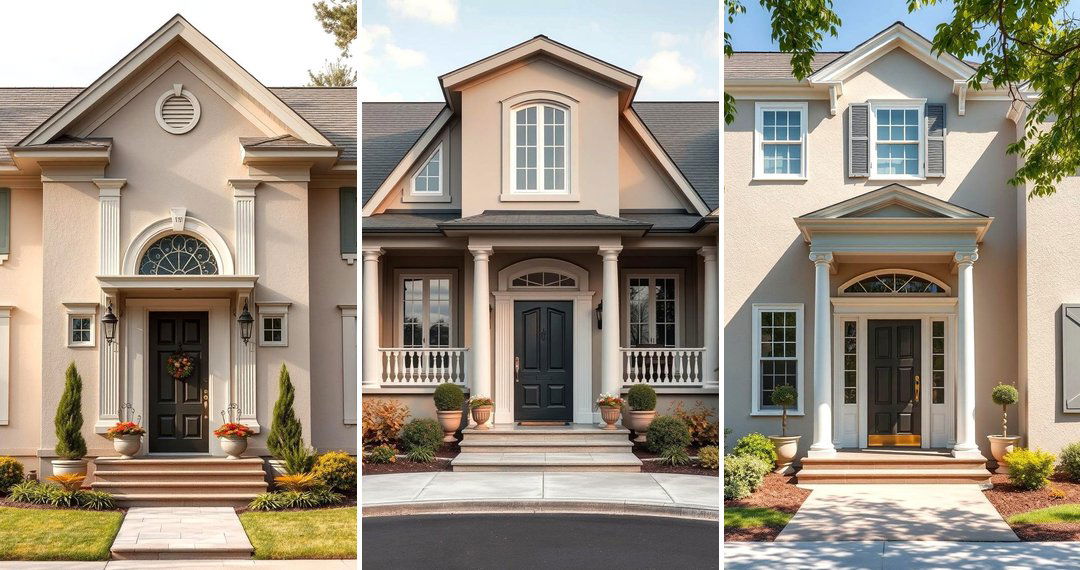Floor transitions play a vital role in creating smooth, functional, and aesthetically pleasing connections between different areas of your home. Whether you're combining hardwood with tile, carpet with laminate, or any other combination, the right transition can enhance the flow of the space. In this guide, we'll explore 24 unique floor transition ideas that can suit various styles and needs. By focusing on both visual appeal and practicality, these transitions can ensure seamless movement throughout your home while adding a polished, finished look. Let's dive into some creative ways to bring your floors together, making each step an enjoyable part of your home's design journey.
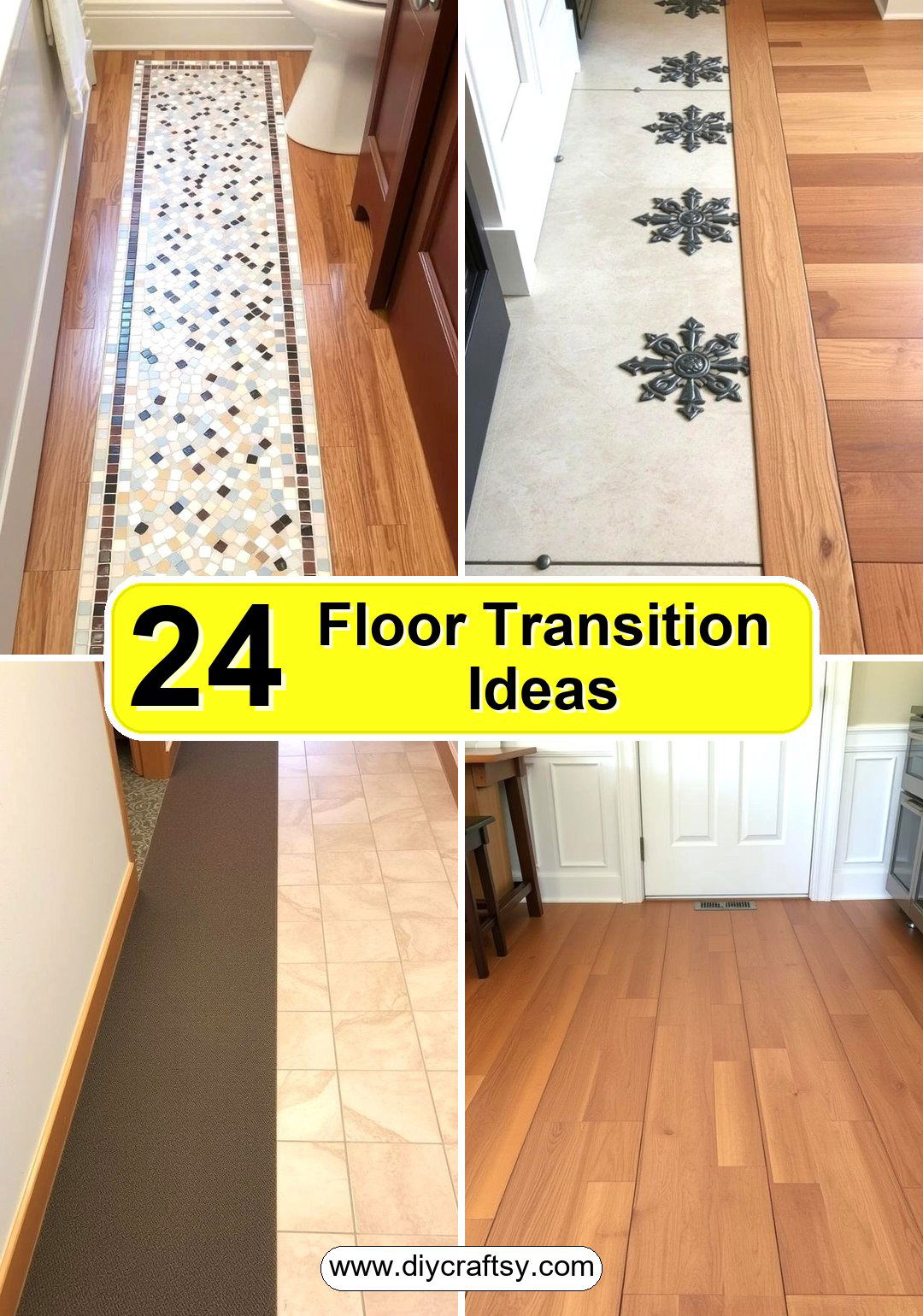
1. T-Molding for a Clean, Subtle Transition

T-molding is an excellent choice for floor transitions, offering a clean and subtle look between two floors of the same height. It’s often used between hardwood, laminate, or engineered wood floors. The T-shape ensures a snug fit where the two floorings meet, minimizing any tripping hazards while offering smooth movement between rooms. T-molding is perfect for modern homes where simplicity is key, and it can blend seamlessly with almost any type of floor.
2. Thresholds to Define Separate Spaces

Thresholds are often used to visually distinguish one room from another while providing a practical transition. Whether you're separating rooms with different flooring materials or creating a clear division between spaces, thresholds add a subtle yet significant touch to the overall design. This transition type works well with contrasting materials, such as wood and tile, and helps maintain an organized, neat look. Choose from a variety of styles, from minimalistic metal finishes to traditional wooden thresholds.
3. Quarter Round to Accentuate Edges
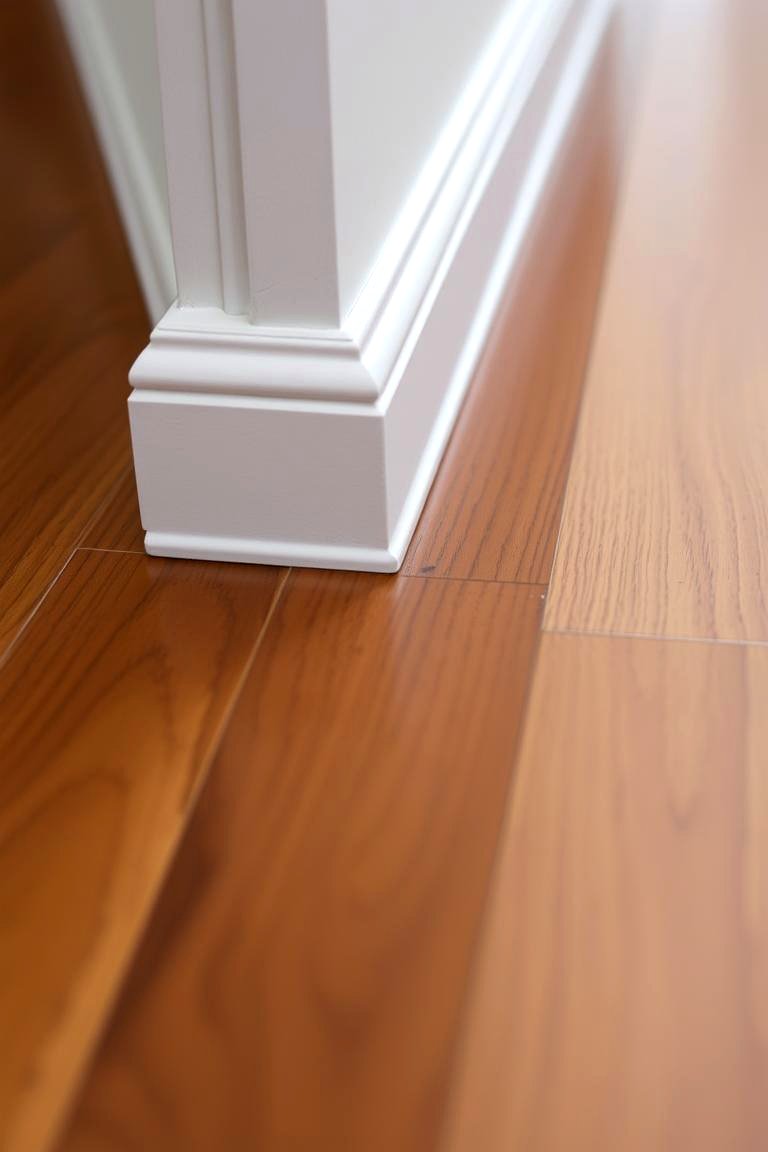
If you're looking to add a bit of flair to your floor transitions, consider using quarter round molding. This type of transition works especially well with hardwood, laminate, or vinyl floors. Quarter round molding is designed to cover the gap between the floor and the baseboard, giving your flooring a polished, finished edge. It can also help hide any minor imperfections in the flooring installation while adding a touch of elegance to the room.
4. Z-Shaped Transition for Raised Floors

For floors with different heights, the Z-shaped transition offers a functional yet stylish solution. The Z-shape helps bridge the height difference between two floors, making it ideal for scenarios where one floor is raised, such as a sunken living room or a multi-level space. The design ensures a smooth transition, eliminating any awkward steps or unevenness. It’s a practical choice that blends form with function, perfect for homes with varying floor levels.
5. Reducer Molding for Height Differences
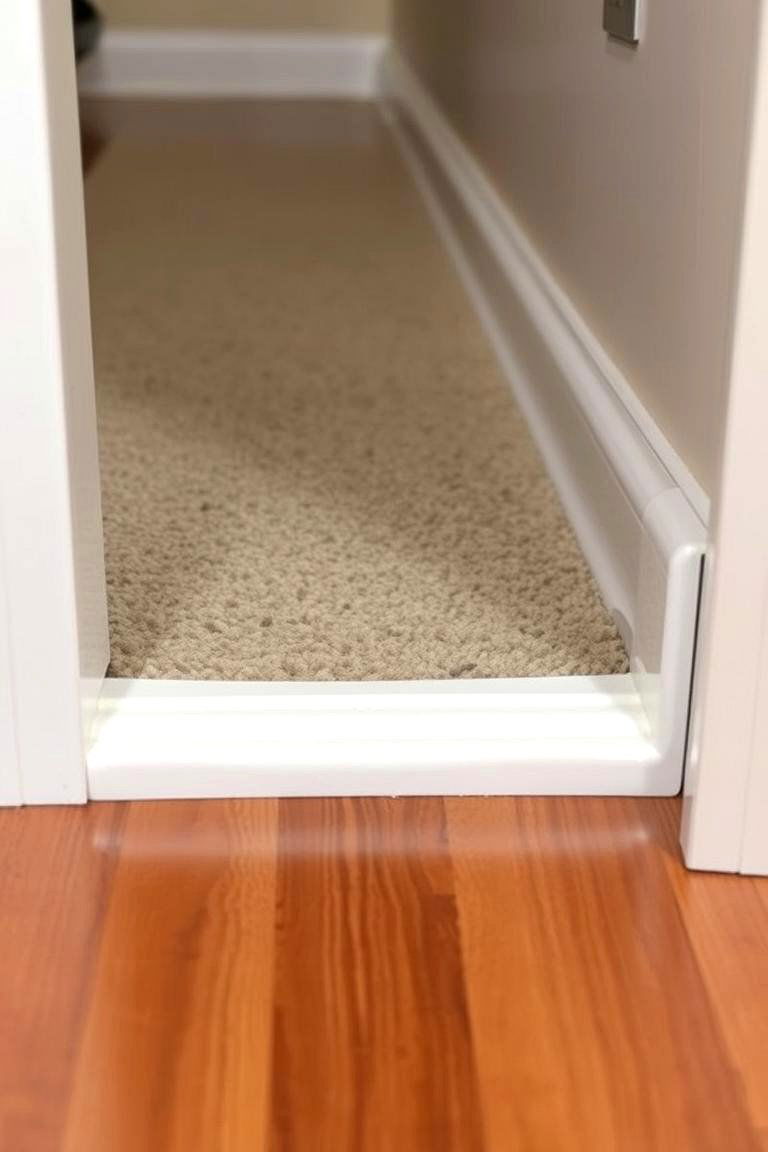
When you have floors of different heights, a reducer molding is an excellent solution. It gently reduces the height difference between two surfaces, creating a smooth slope that ensures ease of movement. This transition is commonly used between wood or laminate flooring and carpet, as it helps avoid tripping hazards. Reducer molding’s sloping design also makes it visually pleasing and easy to walk over, maintaining a seamless flow between rooms.
6. Carpet-to-Tile Transitions with Bullnose Trim
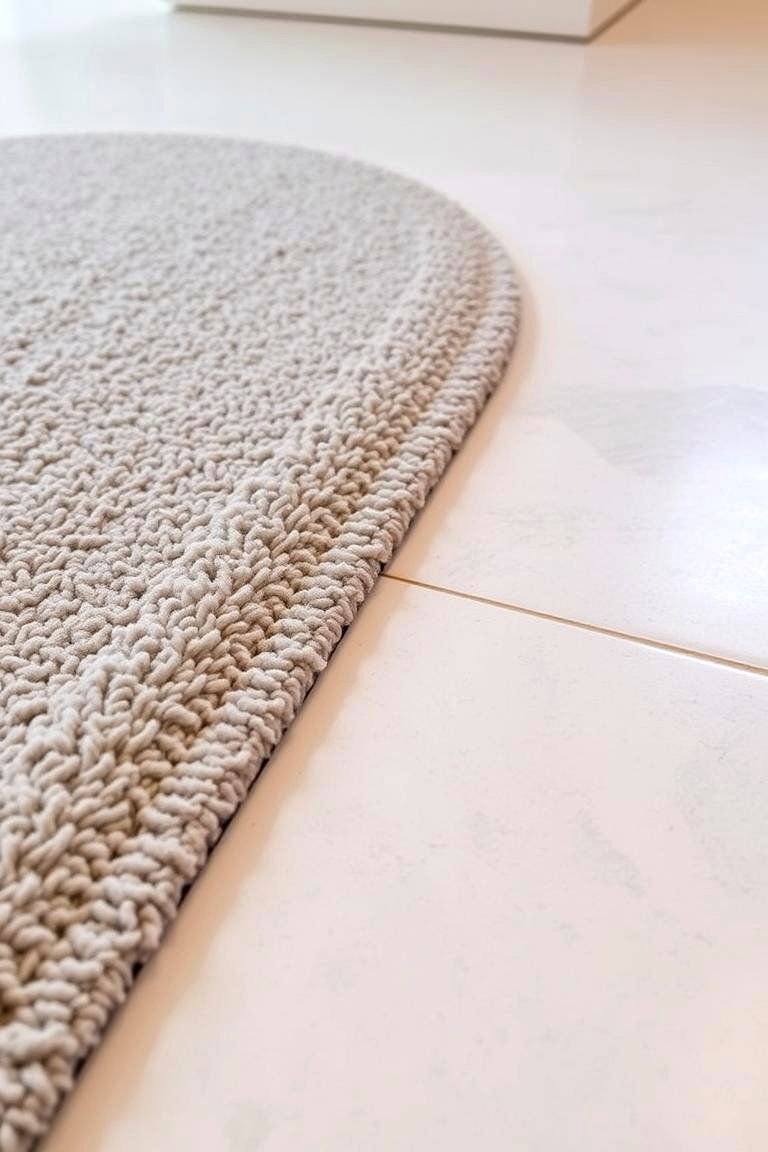
If you're transitioning between carpet and tile, the bullnose trim is an ideal solution. This smooth, rounded edge prevents the carpet fibers from fraying while providing a sleek and neat look where the two surfaces meet. Bullnose trims are especially useful in areas where the two materials meet at a sharp angle, offering a visually soft transition. This trim can also enhance the durability of your flooring, preventing the edges from wear and tear.
7. Flush Mount Transition for Seamless Integration

A flush mount transition provides a perfectly smooth and level connection between two floors. This type of transition is ideal when you want to avoid any noticeable height difference between the floors. Whether transitioning between wood, tile, or laminate, the flush mount allows the two materials to blend seamlessly, offering a clean, sophisticated finish. It’s particularly effective in open-plan spaces where you want a continuous, uninterrupted flow.
8. Expansion Gap Covers for Natural Movement
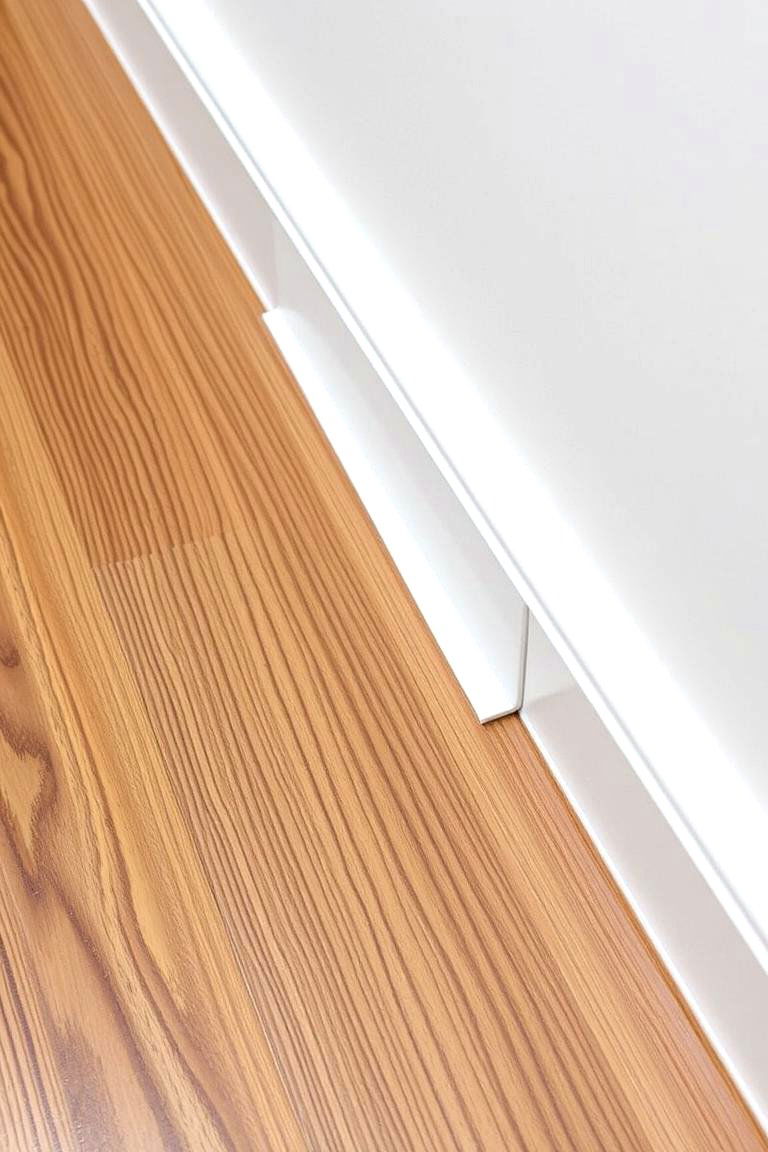
Wood floors, whether solid or engineered, naturally expand and contract with changes in temperature and humidity. To accommodate this movement, an expansion gap cover is essential. These covers fit snugly along the perimeter of your floor, covering the gap between the flooring and the wall. Not only do they ensure the wood can breathe, but they also create a sleek, seamless transition between flooring materials, protecting your investment in the long term.
9. Metal Transition Strips for Modern Aesthetics
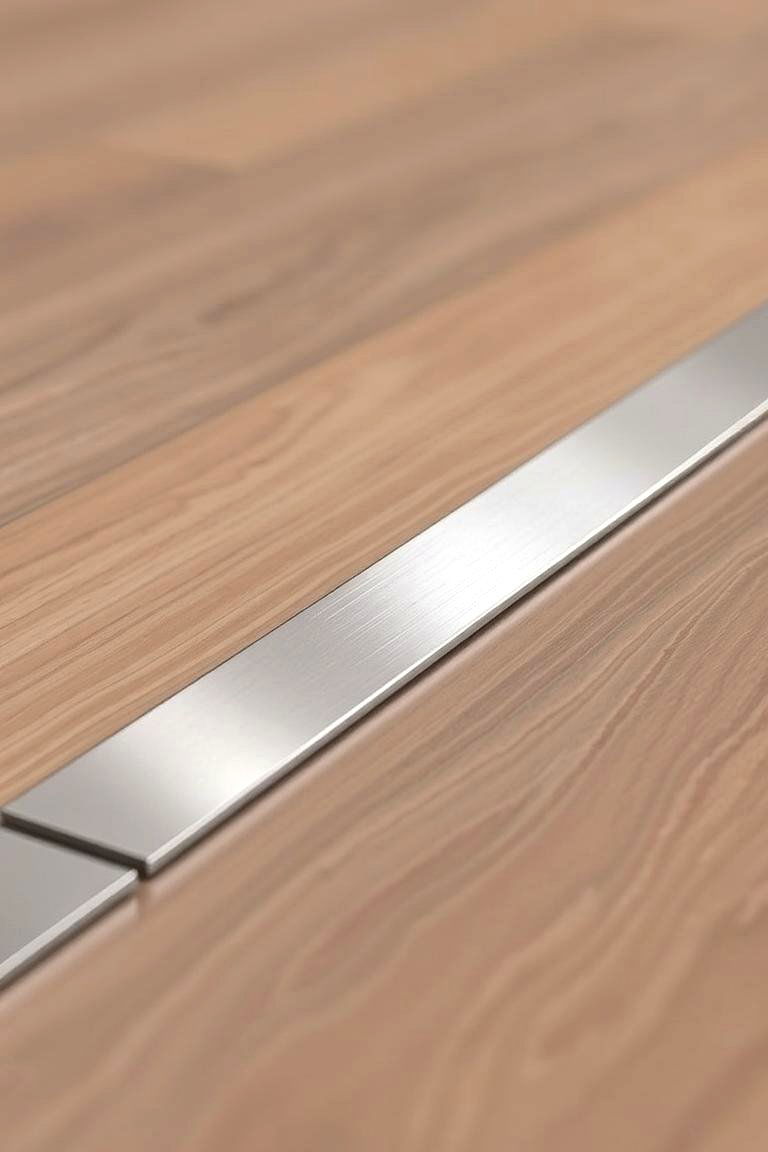
Metal transition strips are a contemporary option that works well in modern spaces. These strips are designed to create a smooth and durable transition between different flooring materials, such as hardwood to tile or laminate to vinyl. Metal strips are sleek, clean, and minimalistic, making them ideal for urban, industrial, or minimalist home designs. With various finishes like brushed nickel or chrome, metal strips add a touch of sophistication to any room.
10. Flexible Vinyl Transitions for Dynamic Spaces

Vinyl flooring is known for its versatility, and flexible vinyl transitions are no exception. These strips provide a smooth connection between vinyl and other types of flooring, such as wood, tile, or carpet. They’re easy to install and can accommodate slight shifts in the floor’s height, making them a practical option for dynamic spaces. Flexible vinyl transitions are durable, affordable, and available in various colors and textures to match your decor.
11. Mosaic Tile Borders for Decorative Transitions
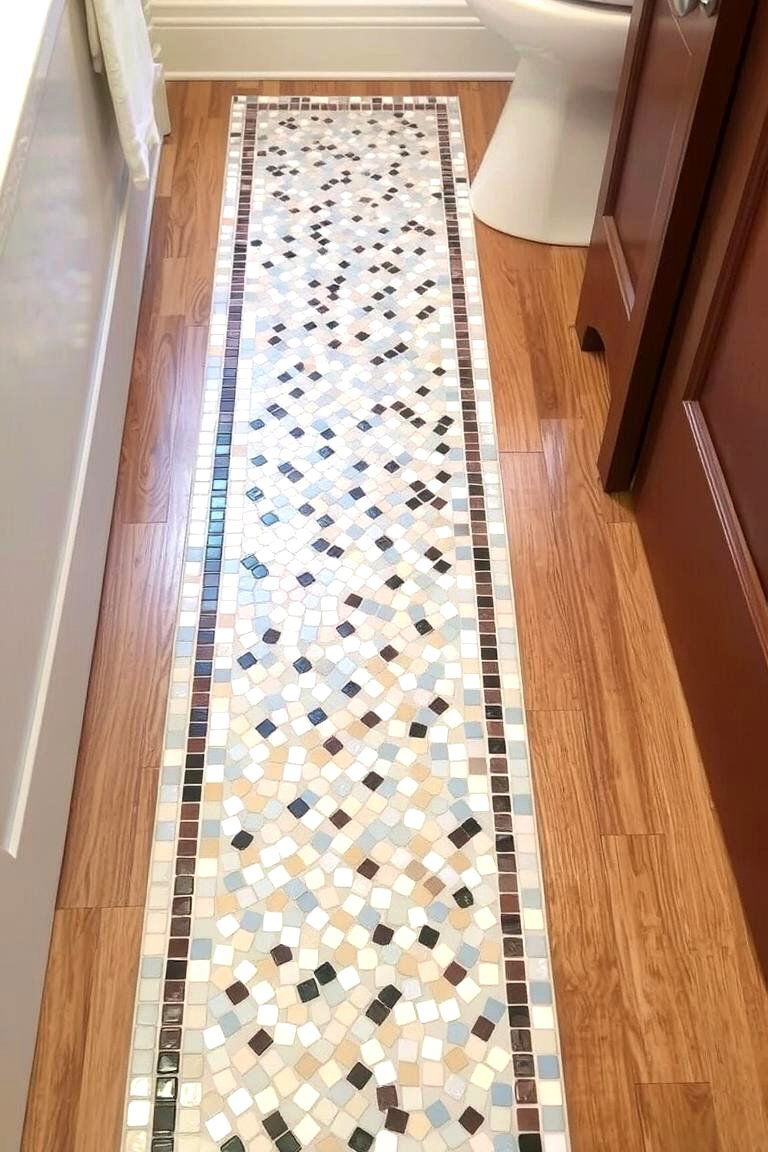
For a more artistic approach to floor transitions, consider using mosaic tiles as a decorative border. Mosaic tiles can be used as a stunning contrast to the main floor material, creating a unique and eye-catching feature. Whether you’re transitioning from hardwood to tile or tile to concrete, mosaic borders can elevate the space and provide a personalized touch. This is an ideal choice for homeowners who want to infuse creativity and style into their floors.
12. Grout Joints for Subtle, Clean Borders

For an understated, clean transition, grout joints are a simple yet effective solution. Often used between tiles of different sizes or materials, grout joints ensure that the transition remains level while offering a subtle contrast. This type of transition is especially effective in bathrooms or kitchens where functionality and a seamless look are essential. Grout joints provide the perfect balance between practicality and aesthetic appeal, allowing for easy maintenance and a timeless finish.
13. Ramp Transition for Accessibility
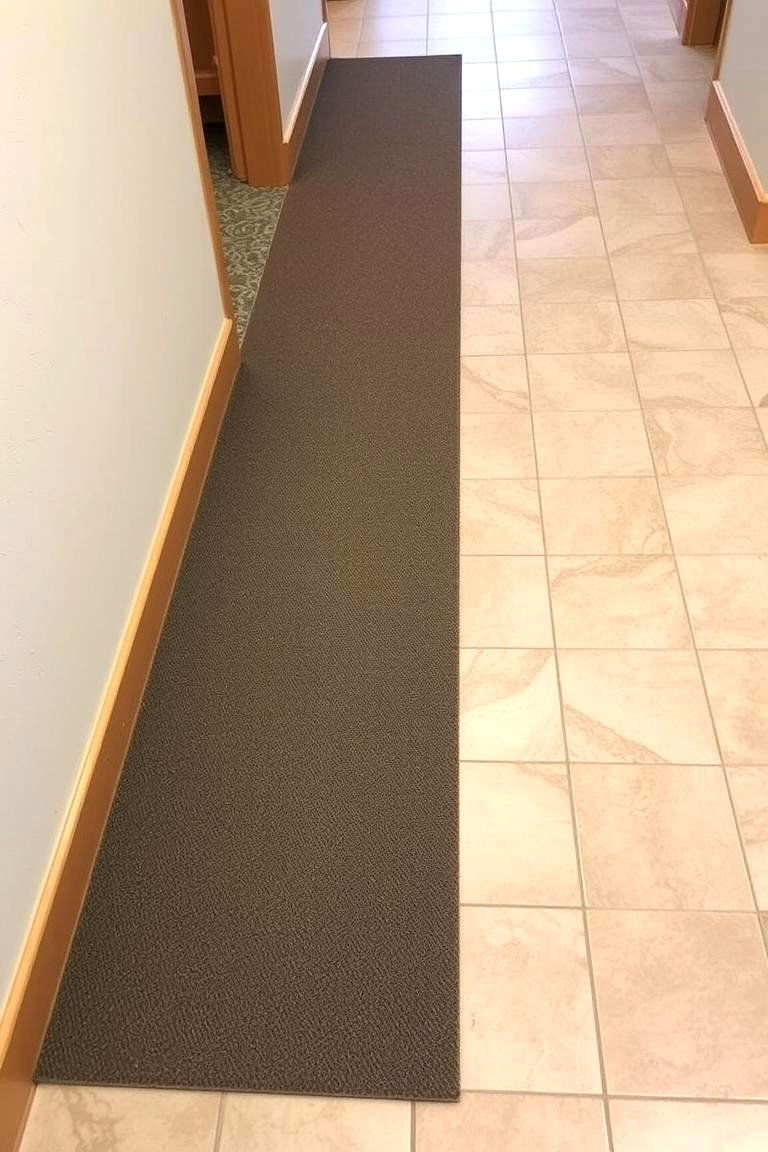
A ramp transition is a must-have for households where accessibility is a priority. These ramps are designed to bridge the gap between two floors or surfaces with a gentle slope, making them ideal for people with mobility challenges. Whether you're transitioning from a carpeted floor to tile or hardwood, the ramp provides a safe and smooth path. It’s a practical choice for homes with elderly residents, young children, or anyone who may have difficulty with stairs.
14. Wide Plank Transitions for Rustic Charm
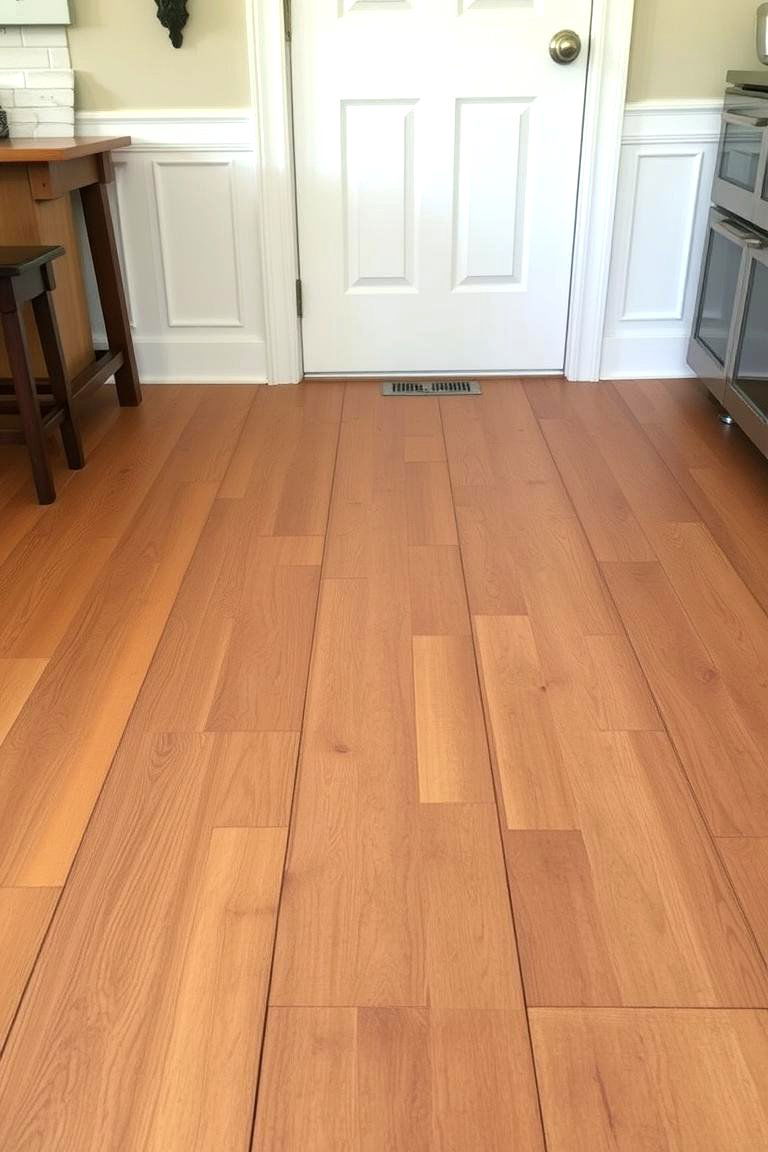
For a rustic, country-inspired look, wide plank transitions are a great choice. Wide planks are often used in hardwood or engineered wood floors, giving the room a warm, organic feel. When used to transition between rooms, wide planks create a natural flow, complementing the style of the home. Whether it’s a cabin, farmhouse, or contemporary rustic space, wide plank transitions provide an earthy, inviting look that never goes out of style.
15. Floating Floors with No Transition Strip
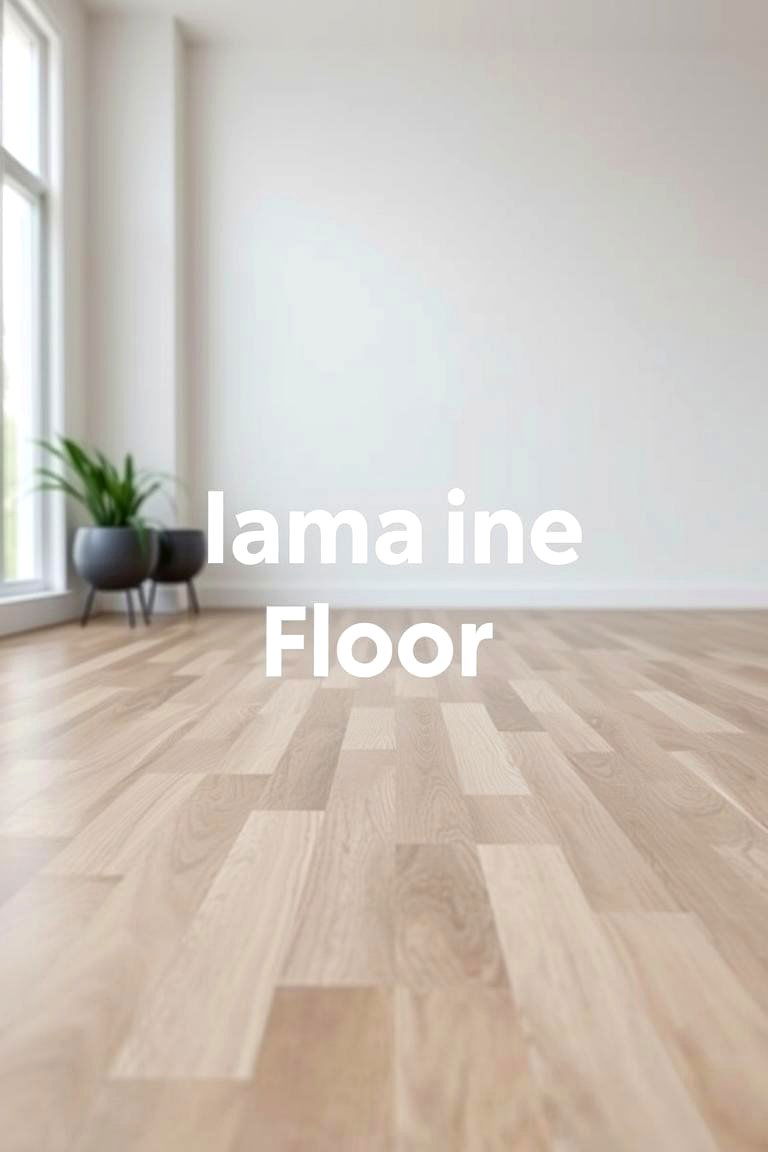
For a sleek, minimalist look, consider using floating floors with no transition strip. Floating floors are not directly attached to the subfloor, which allows them to expand and contract naturally. These floors can be installed seamlessly without the need for any transition strips, creating a smooth, uninterrupted surface between different materials. This approach works particularly well with laminate, engineered wood, or luxury vinyl planks.
16. Stained Concrete to Wood Transitions

Concrete floors provide an industrial, modern look, while wood floors add warmth and character. A stained concrete to wood transition combines these two materials beautifully. Whether you’re looking to create a dramatic contrast or a more subtle blend, this transition can be customized to suit your design needs. Stained concrete floors can come in various colors, from rich, earthy tones to sleek, polished finishes, creating a seamless yet visually appealing connection to wooden flooring.
17. Beveled Edge for Smooth, Sloped Transition
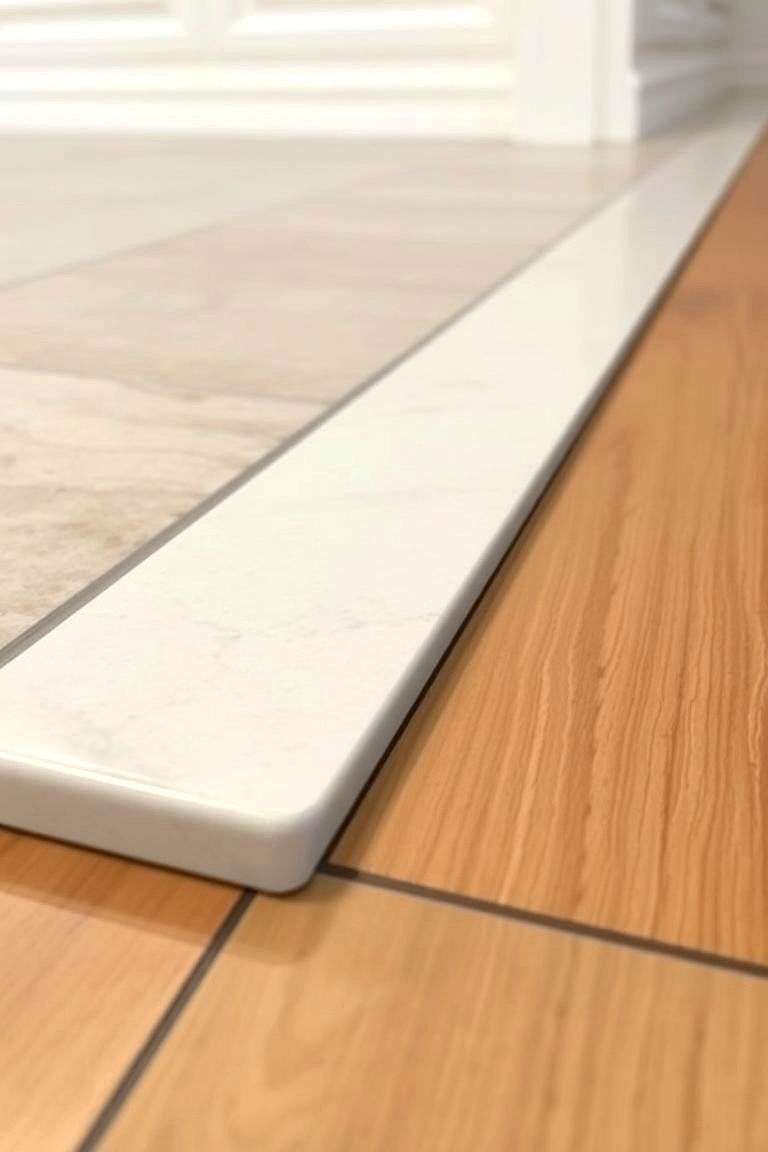
For a smooth, sloped transition between two floors, a beveled edge is a great option. This type of transition creates a gentle, rounded slope between different flooring materials, such as tile and wood. Beveled edges are perfect for rooms with high-traffic areas, where you want to eliminate any sharp transitions. This practical solution also makes cleaning and maintaining floors much easier, as debris is less likely to get trapped in the sloped edge.
18. Lighted Transition Strips for Modern Touch

Add a modern twist to your floor transitions with lighted transition strips. These strips integrate LED lights into the transition between flooring materials, illuminating the space and adding a stylish touch. Lighted transitions not only help define spaces, but they also improve safety by providing visibility in low-light areas. This contemporary option is ideal for stairways, hallways, and entryways, offering both function and flair.
19. Hardwood Stair Nosing for Elegant Stairs
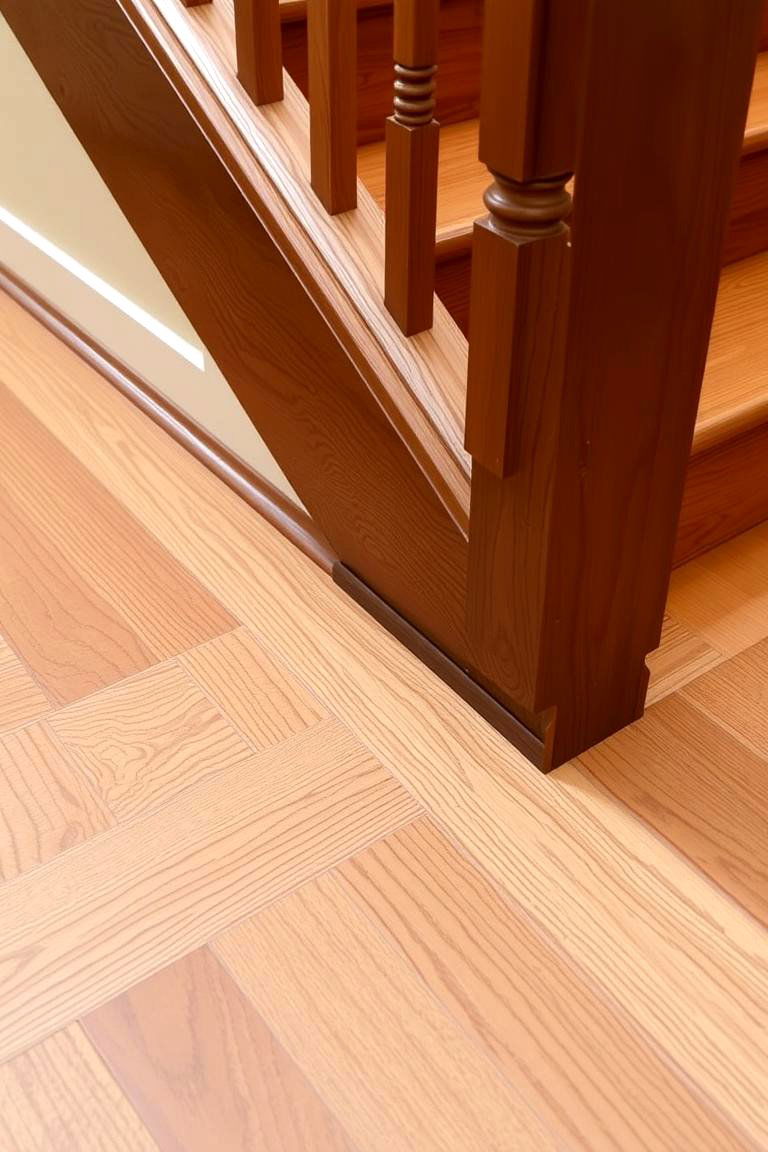
If your transition involves stairs, hardwood stair nosing is a timeless and elegant option. Stair nosing adds a finished look to the edge of each step while ensuring a safe, secure transition between the steps and the floor. It can be installed over hardwood, laminate, or carpeted stairs, creating a uniform aesthetic that ties the entire space together. Hardwood stair nosing is durable, easy to clean, and perfect for elevating the design of your staircase.
20. Decorative Metal Insets for Industrial Style
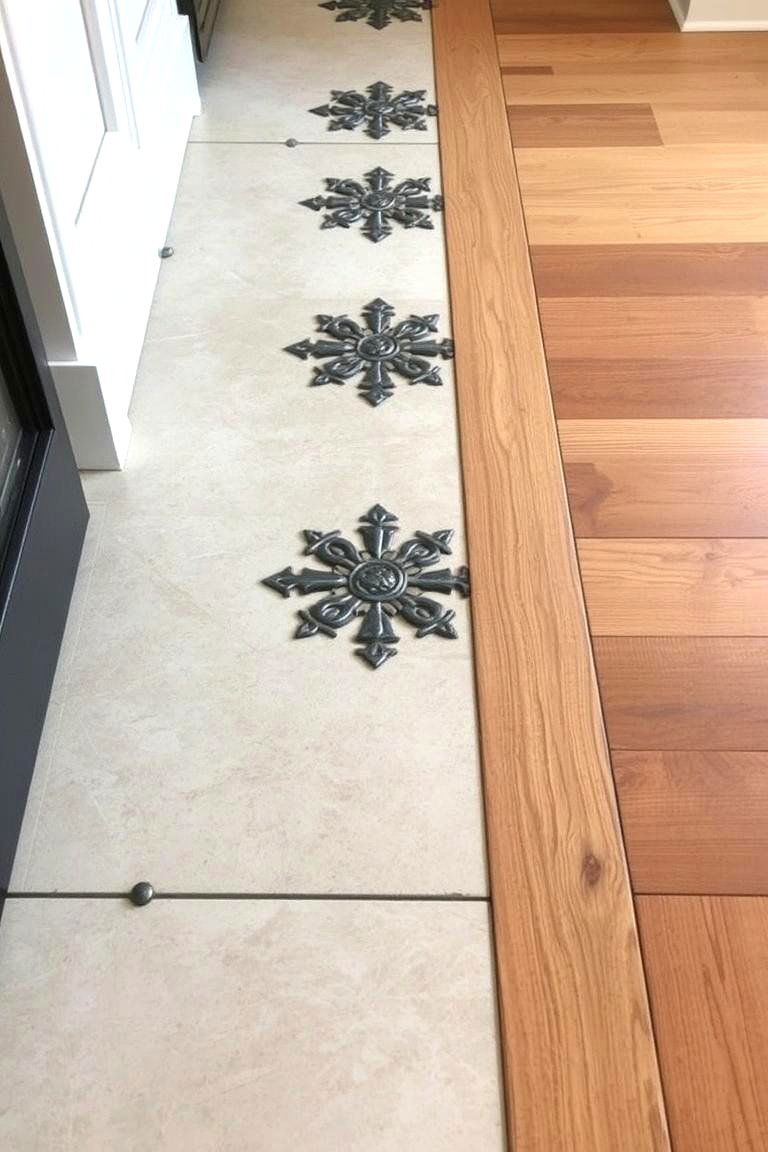
For those who love an industrial aesthetic, decorative metal insets can create bold and eye-catching transitions between flooring materials. These metal strips, often made of stainless steel or brushed aluminum, are inserted into the floor, providing a rugged yet stylish touch. They are particularly effective when transitioning between tiles and wood or concrete, offering a striking contrast that complements industrial-style decor.
21. Wood to Tile Transition with a Natural Border
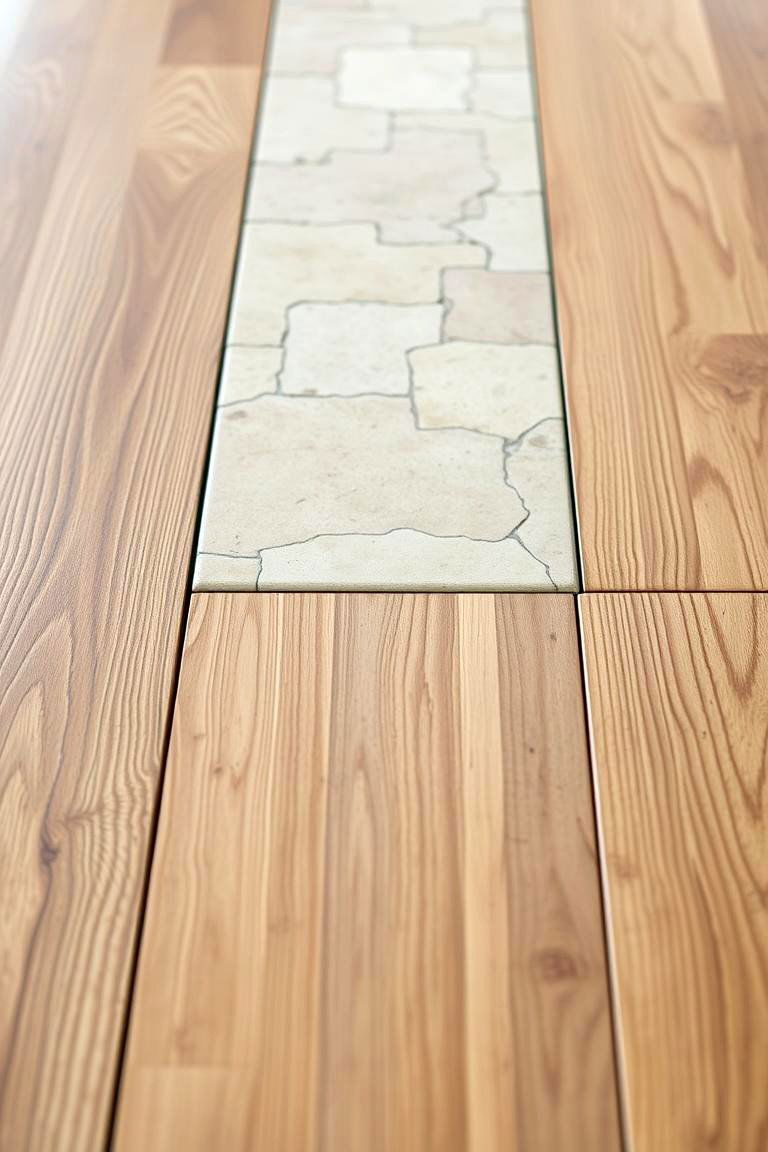
A wood to tile transition with a natural border offers a harmonious blend of natural materials. Using a wooden border between wood and tile floors creates a balanced and elegant transition, offering a smooth, well-defined edge. The wood acts as a framing element that ties the two different surfaces together, making the transition seamless and visually appealing. It’s a great choice for homes where nature-inspired design elements are a focal point.
22. Soft Rubber Transition Strips for Comfort
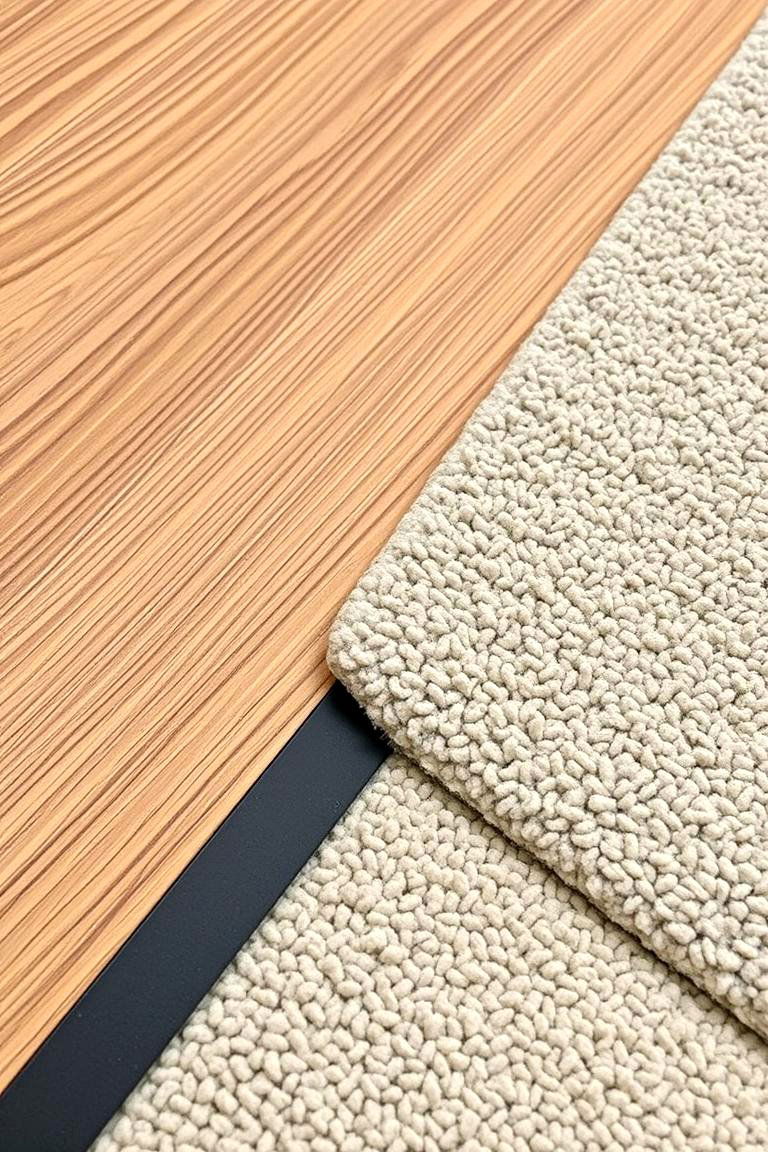
Soft rubber transition strips provide a comfortable solution for transitioning between floors with different textures, like carpet to tile or wood to vinyl. These strips offer a cushioned surface underfoot, providing extra comfort and reducing noise. Rubber transitions are durable, easy to maintain, and work particularly well in areas with heavy foot traffic, such as hallways or kitchens. Their flexibility ensures a secure fit between different surfaces while keeping things comfortable.
23. Classic Wooden Threshold for Traditional Homes
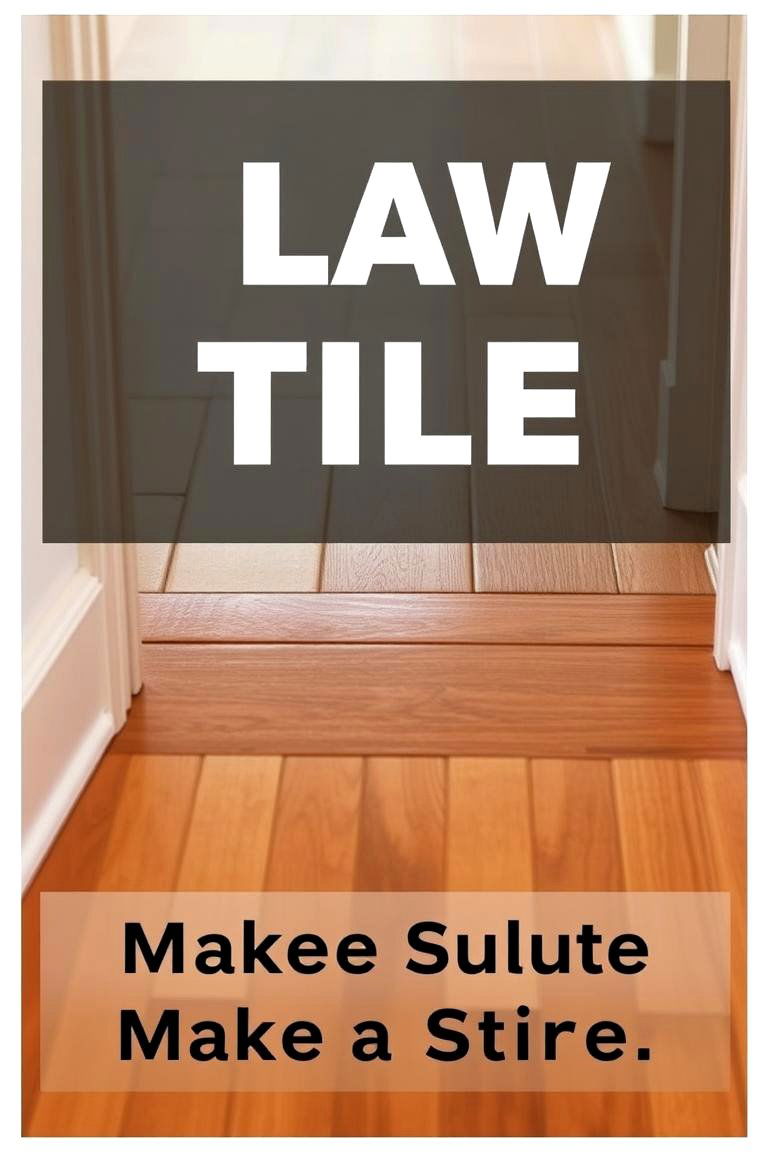
A classic wooden threshold is a timeless choice for traditional homes. This type of transition offers a warm, inviting look that complements various flooring types, such as wood, tile, or carpet. Wooden thresholds are available in various finishes, from light oak to rich mahogany, allowing you to customize the look according to your home’s aesthetic. It’s an elegant, practical solution that can tie your space together seamlessly.
24. Patterned Tile Transitions for a Statement Look
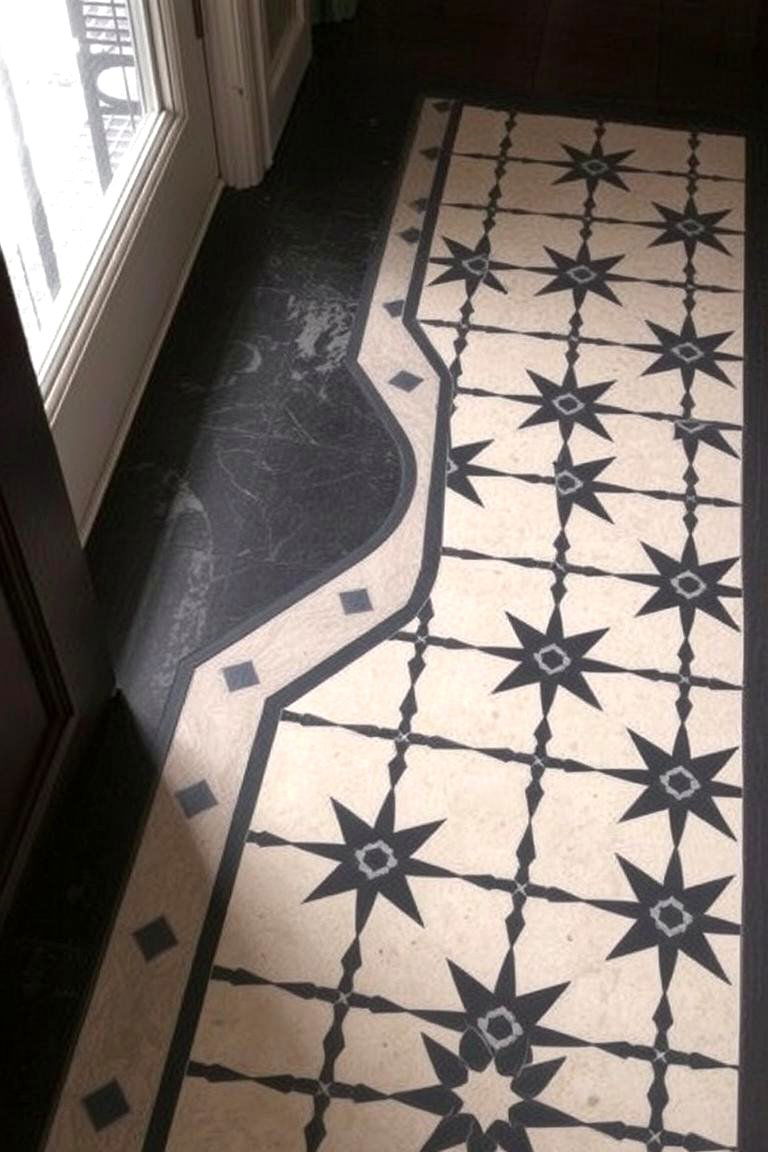
Patterned tiles are a bold way to make your floor transitions stand out. Whether you’re using intricate geometric designs or vintage-inspired patterns, patterned tiles can add personality and visual interest to the transition between different flooring materials. This approach works especially well when you want to highlight the change in floor materials, creating a statement piece that doubles as functional art. Add a pop of creativity to your floors with these eye-catching tiles.
Conclusion:
Floor transitions are an essential part of any home design, providing both practical solutions and aesthetic appeal. From seamless, sleek transitions to bold, decorative choices, there’s something for every style and need. Whether you’re looking to enhance functionality, create a cohesive look, or add a touch of creativity, these 24 floor transition ideas can help you achieve the perfect balance between form and function. Consider your space’s unique requirements and use these ideas to guide your next flooring project.


